 W
WThe coat of arms of the Republic of Adygea, a federal subject of Russia, was adopted on May 24, 1994. It is registered as №163 in the Heraldic Register of the Russian Federation.
 W
WThe emblem of Angola reflects the recent past of the new nation. There is heavy Marxist imagery found on the device, expanded from what is found on the national flag.
 W
WThe national emblem of the Azerbaijan Soviet Socialist Republic was adopted in 1937 by the government of the Azerbaijan Soviet Socialist Republic. The style is based on the emblem of the Soviet Union.
 W
WThe national emblem of the Chuvash Autonomous Soviet Socialist Republic was adopted in 1937 by the government of the Chuvash Autonomous Soviet Socialist Republic. The emblem is identical to the emblem of the Russian Soviet Federative Socialist Republic.
 W
WThe coat of arms of Jakarta is the official symbol of Jakarta, the capital of Indonesia. The coat of arms depicts the National Monument and a gold-and-white paddy and cotton.
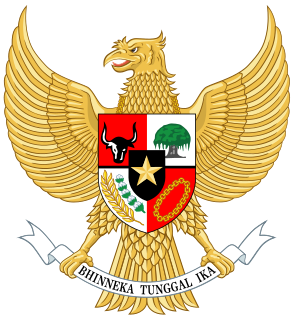 W
WThe national emblem or coat of arms of Indonesia is called Garuda Pancasila. The main part of Indonesian national emblem is the Garuda with a heraldic shield on its chest and a scroll gripped by its legs. The shield's five emblems represent Pancasila, the five principles of Indonesia's national ideology. The Garuda claws gripping a white ribbon scroll inscribed with the national motto Bhinneka Tunggal Ika written in black text, which can be loosely translated as "Unity in Diversity". Garuda Pancasila was designed by Sultan Hamid II from Pontianak, supervised by Sukarno, and was adopted as the national emblem on 11 February 1950.
 W
WThe coat of arms of the Kirghiz Soviet Socialist Republic was adopted on March 23, 1937 by the government of the Kirghiz Soviet Socialist Republic. The coat of arms is based on the coat of arms of the Soviet Union. It shows symbols of agriculture on a backdrop of the Ala-Too mountain ranges, surrounded by a frame of folk art of the Kyrgyz people. The red star was added in 1948. The rising sun stands for the future of the Kyrgyz nation, the star as well as the hammer and sickle for the victory of communism and the "worldwide socialist community of states".
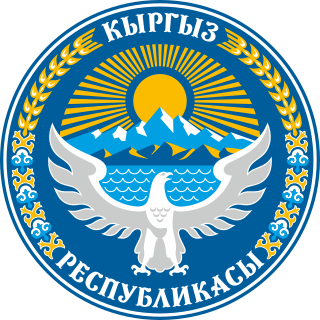 W
WThe emblem of Kyrgyzstan was adopted on 2016. The emblem has a circular form which mostly bears the color blue. Light blue is known as the Kyrgyz color of courage and generosity. To the left and right of the coat of arms, wheat and cotton are displayed. In the upper part, the name of the country appears in Kyrgyz "Кыргыз Республикасы". It was designed by A. Abdraev and S. Dubanaev.
 W
WThe coat of arms of Mississippi is an official symbol of the State of Mississippi.
 W
WThe national emblem of the Nakhchivan Autonomous Soviet Socialist Republic was adopted in 1937 by the government of the Nakhchivan Autonomous Soviet Socialist Republic. The emblem almost is identical to the emblem of the Azerbaijan Soviet Socialist Republic.
 W
WThe state emblem of Pakistan was adopted in 1954 and symbolizes Pakistan's ideological foundation, the basis of its economy, its cultural heritage and its guiding principles.
 W
WThe coat of arms or national seal of Saint Vincent and the Grenadines is surmounted by a cotton plant and bears the text "Peace and Justice" in Latin. The centerpiece is based on the colonial badge in use from 1907 to 1979 and features two women in classical Roman dress. The one on the heraldic right stands holding an olive branch and the one on the left holds scales of justice and kneels before a gold altar situated between them.
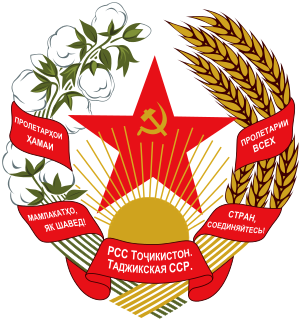 W
WThe State Emblem of the Tajik Soviet Socialist Republic was adopted on March 1, 1937 by the government of the Tajik Soviet Socialist Republic. The emblem is based on the State Emblem of the Soviet Union. It shows symbols of agriculture. The red star is prominently featured with a small hammer and sickle within it. The rising sun stands for the future of the Tajik nation, and the star as well as the hammer and sickle for the victory of communism and the "world-wide socialist community of states". The emblem was replaced with the new emblem in 1992, which uses a similar design to the Soviet one.
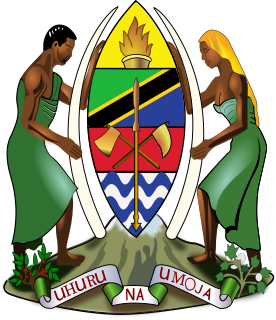 W
WThe coat of arms of Tanzania comprises a warrior's shield which bears a golden portion on the upper part followed underneath by the flag of Tanzania. It was designed by Mr Jeremiah Wisdom Kabati, at Bwiru, Mwanza in 1961.
 W
WThe Great Seal of the State of Tennessee is the official insignia of the U.S. state of Tennessee.
 W
WThe Emblem of the Transcaucasian SFSR was adopted by the government of the Transcaucasian SFSR. The final version was adopted in 1930.
 W
WThe Emblem of the Turkmen Soviet Socialist Republic was adopted on 2 March 1937 by the government of the Turkmen Soviet Socialist Republic. The coat of arms is based on the coat of arms of the Soviet Union. It shows symbols of agriculture and heavy industry, as well as a symbol of the Turkmen people, a rug. The rising Sun stands for the future of the Turkmen nation, the red star as well as the hammer and sickle for the victory of Communism and the "world-wide socialist community of states".
 W
WThe coat of arms of Uganda was adopted three weeks before the proclamation of independence by the Uganda Legislative Council. On 1 October 1962 the arms were approved by Governor of Uganda Walter Coutts, and formally established by law on 9 October.
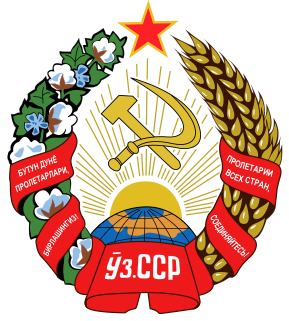 W
WThe emblem of the Uzbek Soviet Socialist Republic was adopted on February 14, 1937 by the government of the Uzbek Soviet Socialist Republic. The emblem is based on the emblem of the Soviet Union. It shows symbols of agriculture and heavy industry (hammer). The rising sun over a map of the Soviet Central Asia symbolizes the future of this region, while the five pointed red star stands for the "socialist revolution on all five continents".
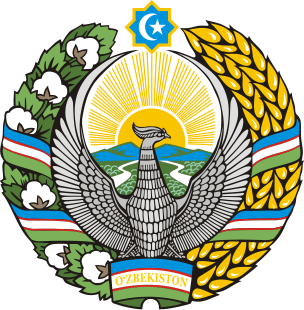 W
WThe state emblem of Uzbekistan was formally adopted on July 2, 1992 by the newly establish Republic of Uzbekistan. It bears many similarities to the emblem of the previous Uzbek SSR, which Republic of Uzbekistan succeeded. Like other post-Soviet republics whose symbols do not predate the October Revolution, the current emblem retains some components of the Soviet one. Prior to 1992, Uzbekistan had an emblem similar to all other Soviet Republics, with standard communist emblems and insignia.
 W
WThe current coat of arms of Zimbabwe was adopted on 21 September 1981, one year and five months after the national flag was adopted. Previously the coat of arms of Zimbabwe was identical to the former coat of arms of Rhodesia.